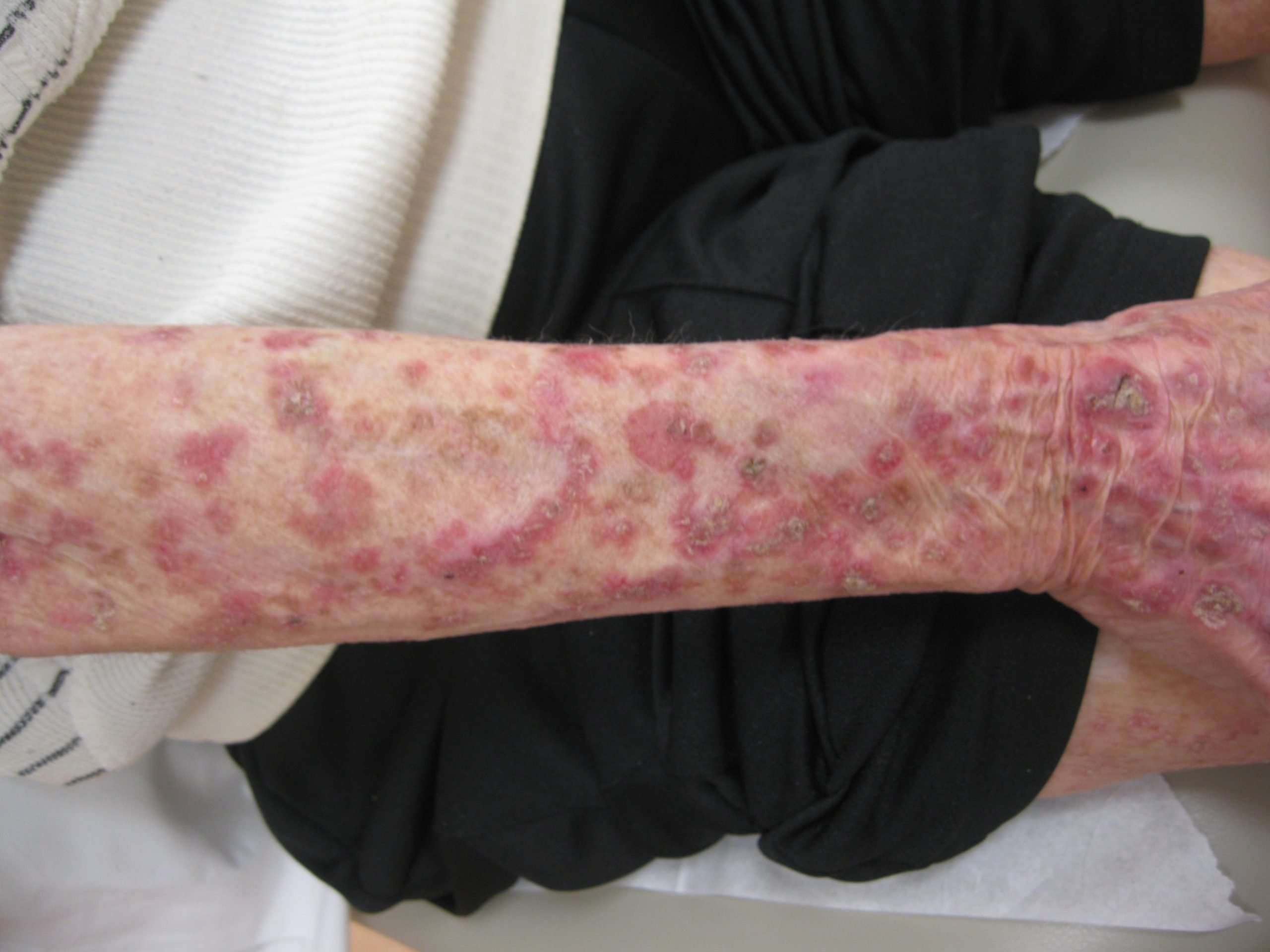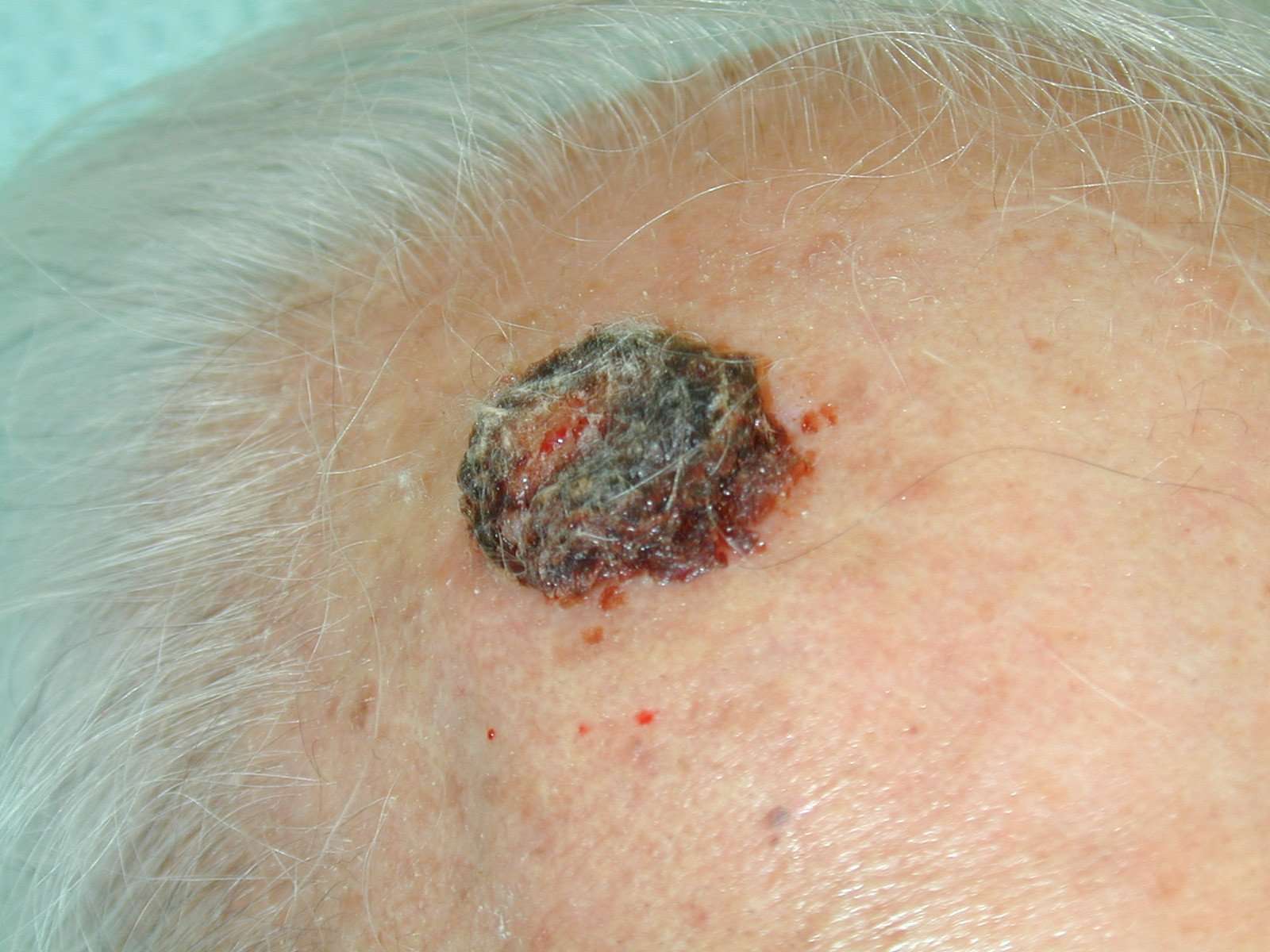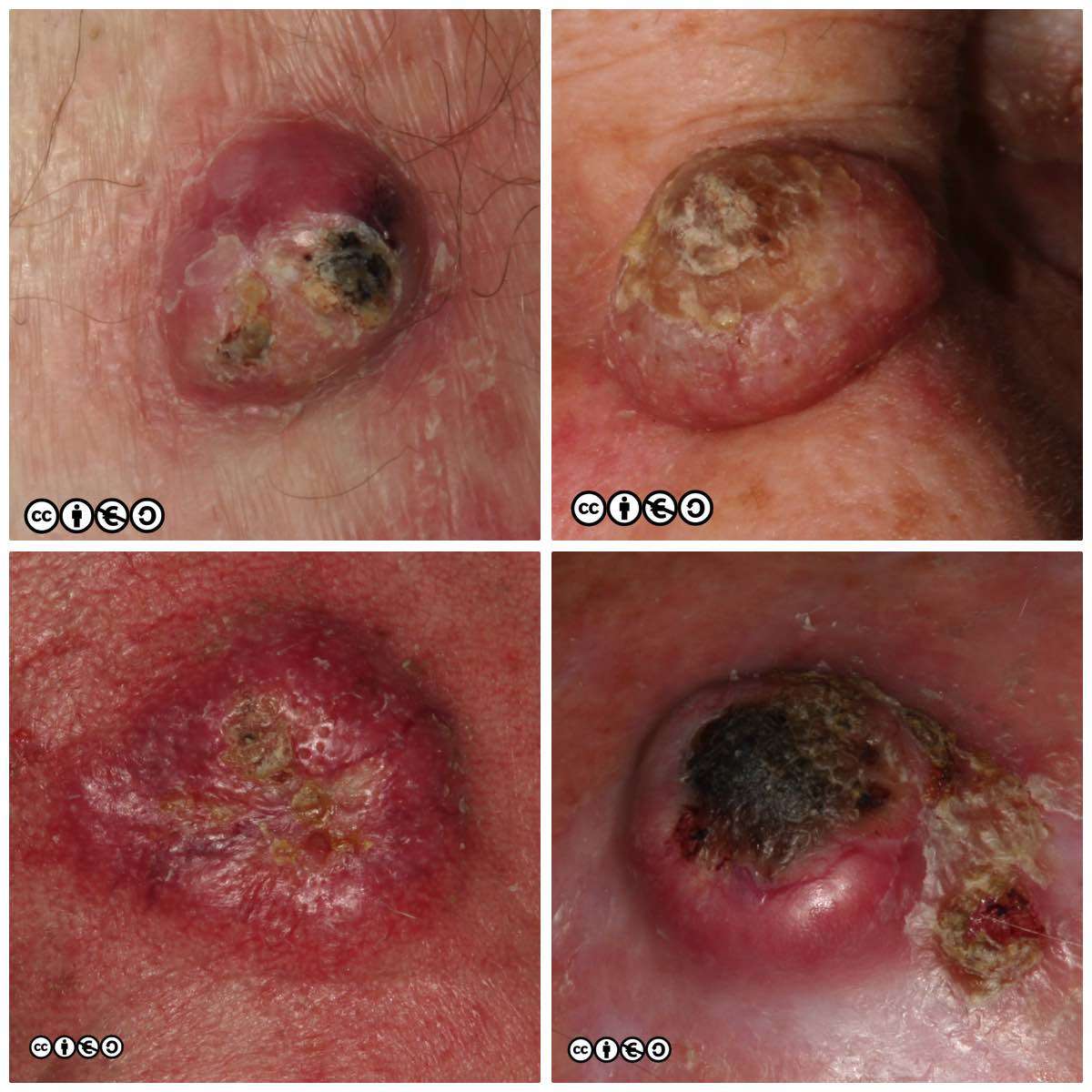Treatments For Skin Cancer Spreading Beyond The Skin
After squamous cell carcinoma moves to other body parts, you can have squamous cell carcinoma treatments like:
Targeted drug therapy: Targeted drug treatments focus on certain weaknesses in cancer cells. After blocking such weaknesses, the targeted drug treatments cause the death of cancer cells. Doctors often mix targeted drug therapy with chemotherapy.
Immunotherapy: The immunotherapy squamous cell carcinoma treatment helps the immune system fight cancer. The bodys disease-fighting immune system doesnt attack cancer as the cancer cells make proteins that blind immune system cells. Immunotherapy works by changing such processes. Doctors consider immunotherapy for squamous cell skin carcinoma in the advanced cancer stage when other treatment options arent worthy.
Chemotherapy: The powerful squamous cell carcinoma treatment method uses drugs to kill cancer cells. When squamous cell carcinoma spreads to other body parts, doctors use chemotherapy either alone or combine it with other treatments like radiation therapy and targeted drug therapy. The main method of chemotherapy is to target damaged skin without touching normal surrounding tissue. Some common topical chemotherapy treatments are:
Fluorouracil : Apply the lotion or cream at the site for three to six weeks. Sometimes the skin can turn red and irritated after you apply the 5-FU.
As topical chemotherapy doesnt kill cells under the skin surface, you should have a close follow-up.
Can Squamous Cell Carcinoma Be Misdiagnosed
Skin cancer is increasingly misdiagnosed by physicians. In many cases, skin cancer is incorrectly diagnosed as eczema or another less serious disease. Misdiagnoses, failure to diagnose, and delayed diagnosis can all be very dangerous for the patient, as the cancer continues to progress without treatment.
Read Also: How Fast Does Squamous Cell Carcinoma Spread
Who Does Squamous Cell Carcinoma Affect
Squamous cell carcinoma can affect anyone. Youre most at risk if you:
- Have long-term sun exposure or sun damage to your skin at a young age.
- Have a pale complexion, blue or green eyes, blonde or red hair.
- Are 65 years of age or older.
- Have a weak immune system or received an organ transplant.
- Had chemical exposure .
People assigned male at birth are about two times more likely to develop squamous cell carcinoma. People over the age of 50 are most likely to get SCCs, but the incidence has been rising in people younger than 50.
Recommended Reading: Melanoma On Face Prognosis
When Your Cancer Comes Back
Finishing your treatment can come as a huge relief, especially if your doctor tells you youre in remission. Yet your cancer can come back. This is called a recurrence.
See your doctor for regular follow-up visits to catch any recurrence early, when its most treatable. The doctor who treated your cancer will let you know how often to get check-ups. You may see your doctor every 3 months for the first year, and then less often.
Addition Of Chemotherapy To Locoregional Treatment

A meta-analysis showed that chemotherapy administered during radiotherapy gave an absolute benefit at five years of 8%. A number of randomised controlled trials have been published since, including the United Kingdom head and neck study of 971 patients. Several of these trials have consistently shown an overall survival benefit to concomitant chemoirradiation compared with radiotherapy alone, and a systematic review of this group showed an overall reduction in mortality of 11%.
These gains in survival come at the expense of increased acute morbidity and might be equally produced by an increase in the radiation dose and potentially therefore not a true improvement in therapeutic index. Interest focuses on the future use of radiation protectants such as amifostine and growth factors .
The optimum chemotherapy regimen is not yet known. Platinum combinations, in particular cisplatin and fluorouracil, are generally regarded as the gold standard, but low dose chemotherapy may be equally effective as full dose, and radiation sensitisers such as nimorazole have shown similar results.
Recommended Reading: Well-differentiated Squamous Cell Carcinoma Prognosis
Does Squamous Cell Carcinoma Spread Quickly
One of the factors that can affect a patients prognosis is whether the malignancy has metastasized . Once squamous cell carcinoma has spread beyond the skin, the five-year survival rate drops to less than 50 percent. Fortunately, its fairly rare for squamous cell carcinoma to metastasize. Plus, when metastasis does occur, the malignancy generally spreads slowly, with the majority of cases being diagnosed before the cancer has spread past the skins upper layer .
When staging squamous cell carcinoma, physicians will take a number of factors into account, one being the degree to which the cancer has already spread throughout the body. For example:
- At Stage 0, squamous cell carcinoma has not spread beyond the epidermis.
- At Stage 1, squamous cell carcinoma has spread deeper into the patients skin but has not entered any lymph nodes or healthy tissues.
- At Stage 2, squamous cell carcinoma still has not metastasized to any lymph nodes or healthy tissues, but displays at least one high-risk feature, which might include spreading into the skins lower layers or the nerves.
- At Stage 3, squamous cell carcinoma has spread into the patients lymph nodes but has not reached any other organs or tissues.
- At Stage 4, which is the most advanced stage, squamous cell carcinoma has spread to at least one distant organ .
What Are The Treatment Options For Squamous Cell Carcinoma Of The Skin
SCC is curable if treated in the early stages. Therapy is determined by the size and location of cancer, age, recurrence, and overall health.
- Surgery: Surgery is usually the treatment of choice for SCC:
- Mohs surgery: Cancerous tissue is removed and examined at the same time.
- Excisional surgery: Malignant part of the skin is removed along with a portion of healthy tissue. Healthy tissue is examined to determine whether there has been a complete removal of malignant cells.
- Electrosurgery: Lesion is scraped with the use of a curette and burned with an electrocautery needle to kill any leftover malignant cells and to reduce bleeding. This is usually performed on small lesions.
Recommended Reading: Invasive Lobular Breast Cancer Survival Rate
Metastatic Squamous Cell Carcinoma To The Cervical Lymph Nodes From An Unknown Primary Cancer: Management In The Hpv Era
Background: Patients with metastases in the lymph nodes of the neck and no obvious primary tumor, neck cancer with unknown primary , represent a management challenge. A majority of patients have metastatic squamous cell carcinoma , although other histologies do occur.
Methods: We comprehensively reviewed the literature, compared available guidelines, and conferred with an international team of experts.
Results: Positron emission tomography-computed tomography and fine needle aspiration under ultrasound guidance increase accuracy of diagnosis. Immunohistochemistry , determination of human papilloma virus status, by p16 staining or by in situ hybridization , and next-generation gene sequencing can guide us regarding probable primary sites and tumor biology. Narrow Band Imaging has been introduced for the early detection of subtle mucosal lesions. Direct laryngoscopy and tonsillectomy have long been procedures used in the search for a primary site. More recently, TransOral Robotic Surgery or Transoral LASER Microsurgery have been introduced for lingual tonsillectomy.
Also Check: Merkel Cancer Prognosis
What Will Happen After Treatment
Youll be glad when treatment is over. Your doctor will want you to check your skin at least once a month. It will be very important to protect yourself from getting too much sun.
For years after treatment ends, you will see your skin cancer doctor. At first, your visits may be every few months. Then, the longer youre cancer-free, the less often the visits are needed. Be sure to go to all of these follow-up visits. Your doctor will ask about symptoms and check you for signs of the cancer coming back or a new skin cancer. Other exams and tests may also be done.
Having cancer and dealing with treatment can be hard, but it can also be a time to look at your life in new ways. You might be thinking about how to improve your health. Call us at 1-800-227-2345 or talk to your cancer care team to find out what you can do to feel better.
You cant change the fact that you have cancer. What you can change is how you live the rest of your life making healthy choices and feeling as good as you can.
Recommended Reading: Ductal Breast Cancer Survival Rates
More Information About Basal Cell Carcinoma
The following are some English-language resources that may be useful. Please note that THE MANUAL is not responsible for the content of these resources.
See the following sites for comprehensive information about basal cell carcinoma, including detection, prevention, treatment options, and other resources:
Understanding Your Stage Of Squamous Cell Skin Cancer
The stage is based on the size of the tumor, how deeply into the skin it has grown, and whether cancer has spread beyond the tumor to the lymph nodes. Your doctor will look at the results of the biopsy to determine the stage. If you have squamous cell skin cancer, your doctor may also recommend imaging such as CT or PET-CT scan, or testing lymph nodes near the tumor to see if the cancer has spread beyond the skin.
Most non-melanoma skin cancers are Stage 0 or Stage 1. Stage 3 and 4 are relatively rare. Based on the type of cancer, the stage of cancer, your overall health, and other factors, your doctor works with you to develop a treatment plan.
Also Check: What Does Cancer Tissue Look Like
Signs And Symptoms Of Squamous Cell Lung Carcinoma
Lung cancer symptoms begin when a tumor presses against other organs in the body or causes damage. Consequently, symptoms of lung cancer often do not occur until the disease has progressed into an advanced stage. Common signs and symptoms of lung cancer include:
- Chest pain that worsens with coughing, laughing, or deep breathing
- Swollen lymph nodes
Squamous Cell Lung Carcinoma Treatment

Treatment for squamous cell lung carcinoma depends on how advanced the cancer is, your ability to tolerate the side effects, and your overall health. Age isnt usually a consideration.
The treatment you receive will be specific to your situation, but there are some general guidelines for the treatment of each stage.
Read Also: Invasive Ductal Carcinoma Grade 3 Survival Rate
What Is Squamous Cell Cancer
Squamous cell carcinoma of the skin is a common skin cancer that typically develops in chronic sun-exposed areas of your body. This type of skin cancer is usually not nearly as aggressive as melanoma and is uncontrolled growth of cells in the epidermis of your skin.
It can become disfiguring and sometimes deadly if allowed to grow. Squamous cell carcinomas are at least twice as frequent in men as in women. They rarely appear before age 50 and are most often seen in individuals in their 70s.
An estimated 700,000 cases of SCC are diagnosed each year in the United States, resulting in approximately 2,500 deaths.
How Doctors Detect Squamous Cell Carcinoma
Processes and tests to find squamous cell carcinoma are:
Physical exam: The doctor asks questions about health history and examines the skin for signs of squamous cell carcinoma.
Removing tissue sample to test: Your doctor cuts some suspicious skin lesion or the whole affected area to look for squamous cell carcinoma. This process is known as a biopsy. The type of skin biopsy you undergo is based on what you need. The doctor then sends the tissue sample to the lab for examination and further process of squamous cell carcinoma treatment.
You May Like: Melanoma Bone Cancer Life Expectancy
Squamous Cell Carcinoma Treatment
Squamous cell carcinomas detected at an early stage and removed promptly are almost always curable and cause minimal damage. However, left untreated, they may grow to the point of being very difficult to treat.
A small percentage may even metastasize to distant tissues and organs. Your doctor can help you determine if a particular SCC is at increased risk for metastasis and may need treatment beyond simple excision.
Fortunately, there are several effective ways to treat squamous cell carcinoma. The choice of treatment is based on the type, size, location, and depth of penetration of the tumor, as well as the patients age and general health. Squamous cell carcinoma treatment can almost always be performed on an outpatient basis.
Management Of Cutaneous Squamous Cell Carcinoma
Treatment options include the following:
-
Surgical excision with clear margins, as verified by frozen sections
-
Mohs micrographic surgery for invasive cSCC in the facial region
-
Radiation therapy as an adjuvant to surgery, to provide improved locoregional control, or as primary therapy in patients who are unable to undergo surgical excision
-
Chemotherapy, such as treatment with oral 5-fluorouracil and epidermal growth factor receptor inhibitors, as adjuvant therapy for select highest-risk cases
-
Systemic chemotherapy for metastatic cSCC
Also Check: Invasive Ductal Cancer Prognosis
What Is Squamous Cell Carcinoma
Squamous cell carcinoma or cutaneous squamous cell carcinoma is the second most common form of skin cancer after basal cell carcinoma. It starts in squamous cells in the outer layer of your skin, the epidermis. Usually, squamous cell carcinomas form on areas of your skin that receive the most sun exposure like your head, arms and legs. Cancer can also form in areas of your body where you have mucous membranes, which are the inner lining of your organs and body cavities like in your mouth, lungs and anus.
What are the types of squamous cell carcinoma?
There are different types of squamous cell carcinoma based on where and how much cancer is in your body:
- Cutaneous: Cancer that only affects the top layer of your skin or cancer thats spread beyond the top layer of your skin.
- Metastatic: Cancer thats spread to other parts of your body beyond your skin.
Certain Factors Affect Prognosis And Treatment Options
The prognosis for squamous cell carcinoma of the skin depends mostly on the following:
- Stage of the cancer.
- Whether the patient is immunosuppressed.
- Whether the patient uses tobacco.
- The patientâs general health.
Treatment options for basal cell carcinoma and squamous cell carcinoma of the skin depend on the following:
- The type of cancer.
- The stage of the cancer, for squamous cell carcinoma.
- The size of the tumor and what part of the body it affects.
- The patients general health.
You May Like: Skin Cancer Spread To Lymph Nodes
How Is Squamous Cell Carcinoma Treated
Treatment for squamous cell carcinoma focuses on removing cancer from your body. Your treatment options vary based on the size, shape and location of your cancer and could include:
- Cryosurgery: Freezing the cancer cells to destroy them.
- : Using blue light and light-sensitive agents to remove cancer from your skin.
- Curettage and electrodesiccation: Scratching off the cancerous lump with a spoon-like instrument , then burning the area with an electric needle.
- Excision: Cutting the cancer out of your skin and stitching your skin back together.
- Mohs surgery: Removing layers of skin affected by cancer, most common for facial cancers.
- Systemic chemotherapy: Using powerful medicines to destroy cancer cells in your body.
What Are The Signs Of Squamous Cell Carcinoma

There are cancerous bumps, marks or lesions that form on your skin that can be a sign of squamous cell carcinoma, including:
- A bump or lump that can feel dry, itchy, scaly or have a different color from the skin around it .
- A lesion on your lower lip where the tissue becomes pale, dry and cracked . This may have a burning sensation when youre exposed to the sun.
- White or pale spots in your mouth, on your tongue, gums or cheeks .
You May Like: Chances Of Squamous Cell Carcinoma Spreading
Organ Preservation In Operable Disease
In two large studies, chemotherapy and then radiotherapy for responding patients or surgery for non-responding patients gaves equal results for locoregional control compared with immediate surgery and then radiotherapy. Survival rates did not differ between the two groups, but this approach allowed a number of patients to retain their larynx.,
These results have led to a trend towards preserving organs by giving chemotherapy during radiotherapy in advanced disease. Mostly, these strategies have scheduled chemoradiotherapy to the primary and neck, followed by a neck dissection six weeks later provided there is a complete response of the primary tumour. An alternative for an inoperable primary tumour or potentially functionally debilitating surgery is neck surgery followed by chemoirradiation to the primary. A prime example of this is in advanced tongue base tumours, where surgical management would involve a total glossolaryngectomy.
How To Improve Your Odds
Even if youve exhausted all of your treatment options, you dont have to give up. Researchers are always testing new SCC treatments in clinical trials. Getting into one of these studies could give you access to a drug or therapy that might slow or stop your cancer.
To avoid the worsening of your skin cancer or a new cancer in a different area, protect yourself from the suns damaging UV rays. Wear sun-protective clothing and a wide-brimmed hat whenever you go outdoors. Apply a layer of broad-spectrum sunscreen that protects against both UVA and UVB rays.
Also check your own skin for any new growths on a regular basis. Report any skin changes to your doctor right away.
Recommended Reading: Invasive Ductal Carcinoma Survival